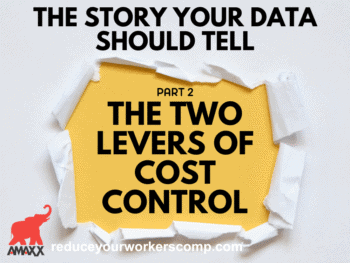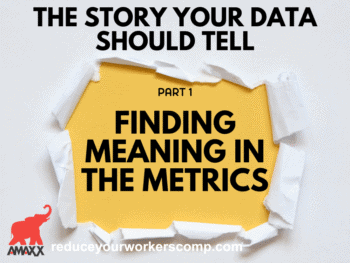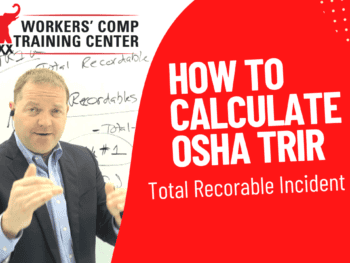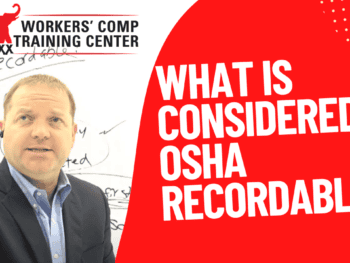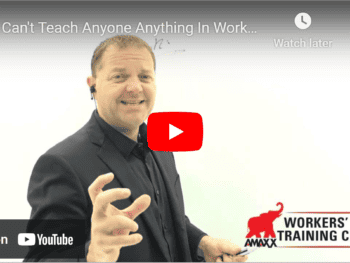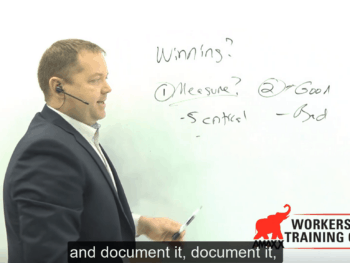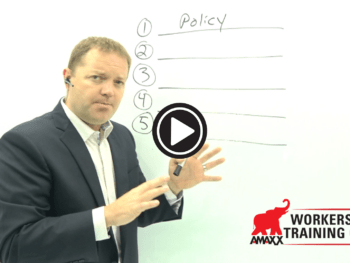As the workers' comp coordinator for a multi-site organization, your responsibility is to ensure all sites are coming into compliance with the workers' comp management program. If you have work sites all over the map, your workers' comp management program will be largely dictated by various state statutes. And, of course, each worksite has its own personality and culture. The workers' bring different skill sets, educational levels, attitudes toward work, and even different languages. English may or may not be the first language.
As different as each of your worksites is, the good news is workers' comp management cost drivers never change (well, almost…). The same interrelated ten factors come into play when a person is injured on the job although as technology changes the tactics to use during implementation may change. Among them are communication strategies, establishing and meeting performance goals, and the level of management commitment to bringing injured employees back to work in a timely fashion.
The degree one cost factor or another is being implemented may change. For example, one worksite may have good alignment with your insurer, but a poor post-injury response program. Another worksite may have a great post-injury response program, a great communication program, but their medical care program is still uncoordinated and could use some reining in. But you can find the presence of all workers' comp management factors in play and impacting your bottom line for better or worse. But you're never going to know this until you conduct a uniform assessment straight across each of your work sites.
Uniform Multi-Site Assessment
Regardless of multi site variables, all work sites must be measured using the same yard stick to ensure valid measurements. Assessing workers' comp cost factors involves gathering the same information about a worksite's performance in the ten key cost drivers. Then and only then can you plot the numerical scores to determine which work sites score high or low in which areas of workers' comp management.
Now you have the nucleus of a master action plan. You can see where the strengths and weaknesses of each site are. Plot your action plan along a time line beginning with researching recommendations, and bringing these to a kick off meeting where you have invited the decision makers from each site to come on board.
Together, working from the master action plan, develop constituent action plans for each work site that, when achieved, will tie into the goals of the master plan. With the backing of senior management, you can spearhead an initiative to bring the worksites into alignment. (workersxzcompxzkit)
Everything begins and ends with the assessment. After six months or a year passes, re-assess using the same comprehensive yardstick. Your scores will tell you how far the units have progressed and what areas still need work. Then you can develop an action plan for Phase Two and so on, until you have a uniform workers' comp management plan up and running for every worksite.
Author Rebecca Shafer, Attorney/Risk Consultant, President, Amaxx Risks Solutions, Inc. has worked successfully for 20 years with many industries to reduce Workers’ Compensation costs, including airlines, healthcare, manufacturing, printing/publishing, pharmaceuticals, retail, hospitality and manufacturing. Contact: RShafer@ReduceYourWorkersComp.com or 860-553-6604.
FREE WC IQ Test: http://www.workerscompkit.com/intro/
WC Books: http://www.reduceyourworkerscomp.com/workers-comp-books-manuals.php
WC Calculator: http://www.reduceyourworkerscomp.com/calculator.php
TD Calculator: http://www.reduceyourworkerscomp.com/transitional-duty-cost-calculator.php
Do not use this information without independent verification. All state laws vary. You should consult with your insurance broker or agent about workers' comp issues.
©2010 Amaxx Risk Solutions, Inc. All rights reserved under International Copyright Law. If you would like permission to reprint this material, contact Info@WorkersCompKit.com


